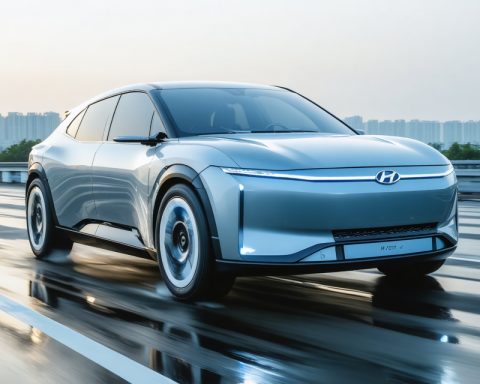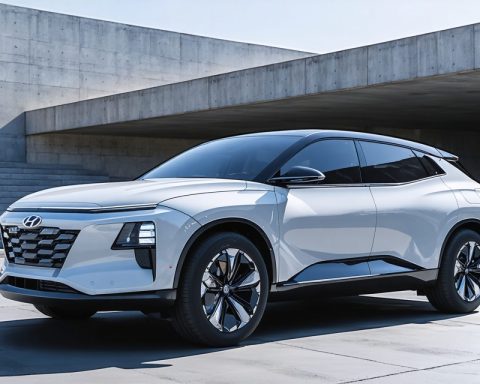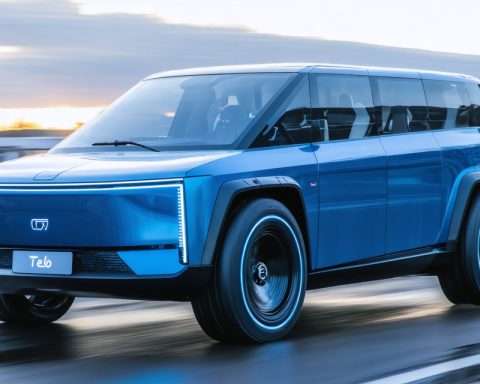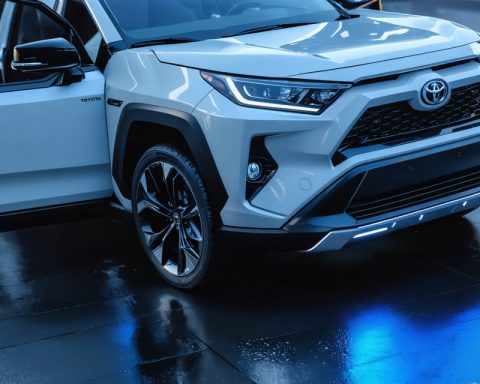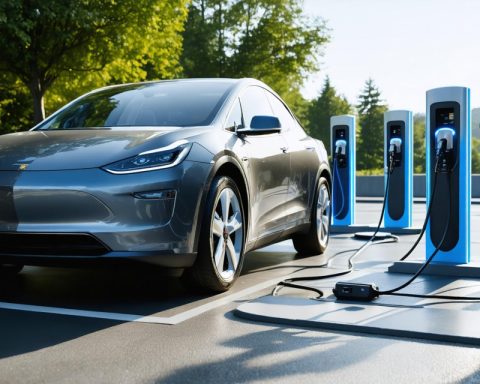- Breakthrough innovations in battery technology could significantly extend the range of electric vehicles (EVs) on a single charge.
- Advancements in energy density, particularly through integrating silicon into battery anodes, have the potential to revolutionize performance.
- This new battery chemistry not only increases mileage but also enhances charging speed and reduces vehicle weight.
- The auto industry is urgently innovating to combat climate change and reduce carbon emissions, emphasizing a shift away from fossil fuels.
- Improved battery efficiency supports a cleaner, sustainable world and may eliminate the range anxiety associated with EVs.
- The transition to electric mobility is poised to redefine modern transportation, promising vehicles that are more efficient and environmentally friendly.
Electric vehicles (EVs) have cruised into the mainstream, yet one nagging question persists: how far can they really go on a single charge? Imagine a world where charging your vehicle could provide a range so extensive, it feels like driving forever without a pit stop. This dream edges closer to reality with a groundbreaking innovation in battery technology.
A pioneering company claims a transformative breakthrough in battery chemistry, potentially taking EVs to unprecedented distances. New advancements in energy density—the holy grail of battery performance—promise to turbocharge the future of sustainable transport. This latest development doesn’t just inch forward; it propels us toward a paradigm shift in how we power our cars.
To better understand why this is such a monumental leap, consider the basic principle of energy density. Modern lithium-ion batteries, the current standard, squeeze a finite amount of energy into their cells. Increasing this energy density means packing more power into a unit of battery, allowing vehicles to travel further without recharging. Imagine each cell expanding its capacity, not in size, but in vigor. The implications are staggering.
The key innovation lies in leveraging novel materials and chemical structures that elevate the storage potential of batteries. One approach involves integrating silicon into the anode structure, replacing or supplementing graphite, which has been the material of choice. Silicon can theoretically hold about ten times as much charge as graphite, a property that could exponentially boost energy retention.
Yet, this is not just about extending mileage. The new chemistry enhances charging speed, reducing wait times at charging stations, and decreasing the overall weight of the vehicle. Lighter batteries mean more efficient energy use, translating into another leap in range and performance.
Behind these technological advancements is a race against climate change, with the auto industry at the front lines of innovation. As nations aim to curb carbon emissions, the pressure mounts to abandon fossil fuels and embrace cleaner technologies. By elevating battery efficiency and capacity, this breakthrough not only paves the road for longer trips but also eases the transition to electric mobility across populations still tethered to gas-powered vehicles.
Imagining what our roads might look like in a decade becomes thrilling with these advancements in mind. The allure of this possibility lies not merely in distance but in the broader impact on global sustainability efforts. Each improvement in battery technology marks a major stride toward reducing our carbon footprint and establishing a cleaner, greener world.
For the everyday driver, the takeaway is clear: the vehicles of the not-so-distant future won’t just whisper across highways quietly; they’ll roar with efficiency and endurance, reshaping our perception of what’s possible. As this innovative battery chemistry makes its way from lab to market, we stand on the cusp of a motoring revolution, where range anxiety may become a relic of the past, and the promise of sustainability drives us boldly into the future.
The Future of Electric Vehicles: How Breakthrough Battery Technology Will Drive Longer Distances
Understanding the Impact of New Battery Innovations on Electric Vehicles
Electric vehicles (EVs) are set to transform the landscape of transportation with a revolutionary advancement in battery technology. But what does this mean for drivers, and how will it alter the EV market? This article delves into the nuances of this breakthrough, offering insights, predictions, and practical tips for consumers and industry experts alike.
How Does the New Battery Technology Work?
The crux of the current innovation lies in enhancing energy density, which enables batteries to store more energy in a compact space. The use of silicon in place of, or alongside, traditional graphite in the anode component of the battery is a pivotal advancement. Silicon anodes can theoretically offer up to ten times the charge capacity of graphite anodes, which significantly enhances both range and efficiency.
Real-World Use Cases and Market Forecasts
1. Extended Driving Range: With improved energy density, future EVs could easily surpass 400-500 miles on a single charge, reducing the need for frequent recharge stops. This will make electric cars more viable for long-distance travel, appealing to a broader consumer base.
2. Faster Charging Times: The new battery chemistry not only allows for more energy storage but also accelerates charging times. Expect rapid charging infrastructure to become more widespread, minimizing downtime and making EVs more convenient for everyday use.
3. Lighter Vehicle Design: Lighter batteries contribute to more efficient vehicle designs, allowing for innovations in car manufacturing and materials that enhance both range and performance.
4. Industry Growth: According to market analysts, the global electric vehicle market is poised to grow substantially with these technological advancements. By 2030, it’s expected that electric vehicles will outperform traditional combustion engines in terms of sales and market share, driven by consumer demand for eco-friendly alternatives.
Addressing Common Questions and Concerns
– How Will Longer Ranges Impact Charging Infrastructure? While longer ranges reduce the frequency of charges, they also necessitate more rapid charging stations to accommodate new technologies. Expect an expansion of fast-charging networks in urban and rural areas.
– Are There Environmental Trade-offs? While silicon anodes offer significant efficiency gains, it’s crucial to consider the environmental impact of sourcing and manufacturing these materials. Sustainable practices in the supply chain will be necessary to minimize ecological harm, which is a growing area of focus for policymakers.
– What About Cost? Initially, new battery technologies may carry a price premium. However, as production scales and silicon becomes the standard, prices are expected to decrease, making such advancements more accessible to the average consumer.
Reviews, Comparisons, and Expert Opinions
Recent surveys suggest that the fear of limited range, or “range anxiety,” is one of the primary barriers to EV adoption. However, experts believe that eliminating such limitations will significantly boost consumer confidence in electric vehicles.
Comparisons of current EV models, such as Tesla’s Model S and Chevrolet’s Bolt EV, with forthcoming models featuring enhanced batteries, indicate a substantial leap in performance.
Actionable Recommendations for Consumers
– Consider Future Needs: When shopping for a new vehicle, consider your typical driving patterns. If long-distance travel is frequent, waiting a few years for this technology to become mainstream may offer the greatest benefits.
– Explore Charging Options: Investigate local charging infrastructure upgrades and ensure they align with the faster charging capabilities of new battery technologies.
– Stay Informed: Keep an eye on announcements from major EV manufacturers about new and upcoming models incorporating these advanced batteries.
Conclusion: The Road Ahead
As advances in battery technology materialize, they promise not only extended vehicle ranges but also a new era in sustainable transport. The implications reach far beyond the individual driver, contributing significantly to global efforts to reduce carbon emissions and fossil fuel dependency.
For more information on electric vehicle innovations, visit the official website of Tesla or check out updates from the Chevrolet homepage. With these tips and insights, consumers can navigate the evolving landscape of electric vehicles and make informed decisions that align with a greener future.


